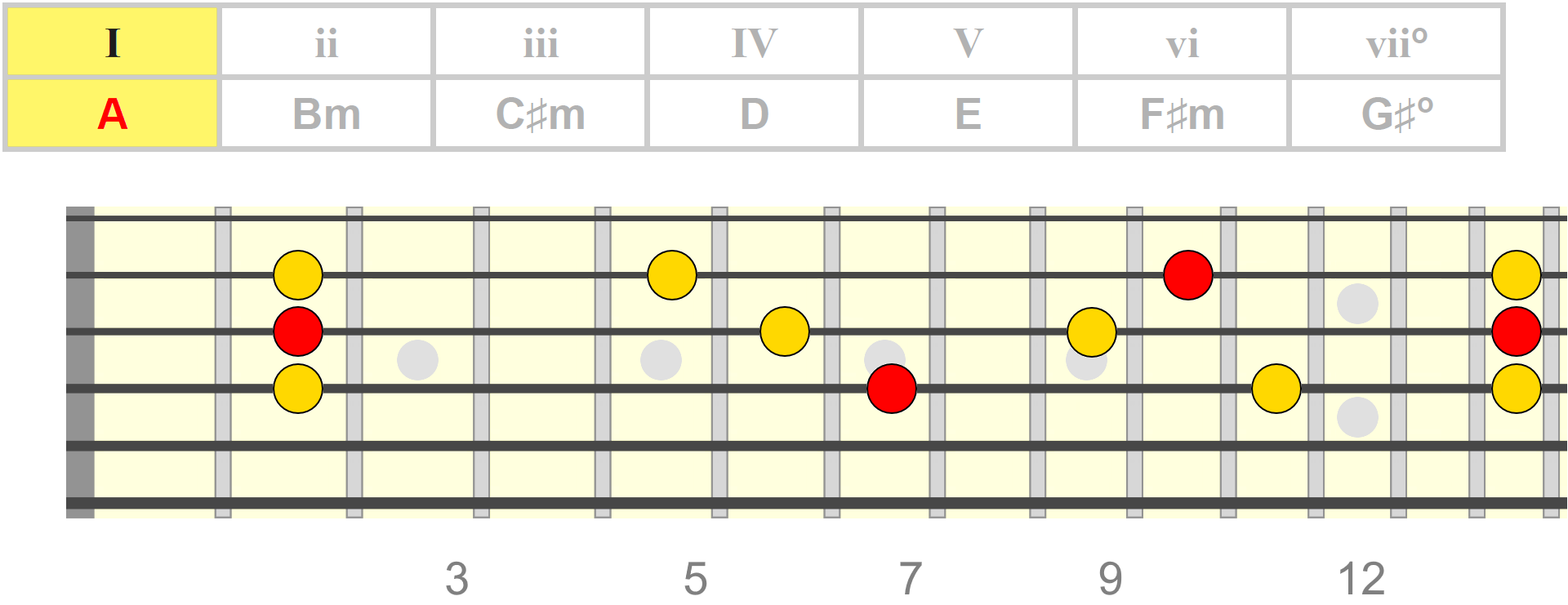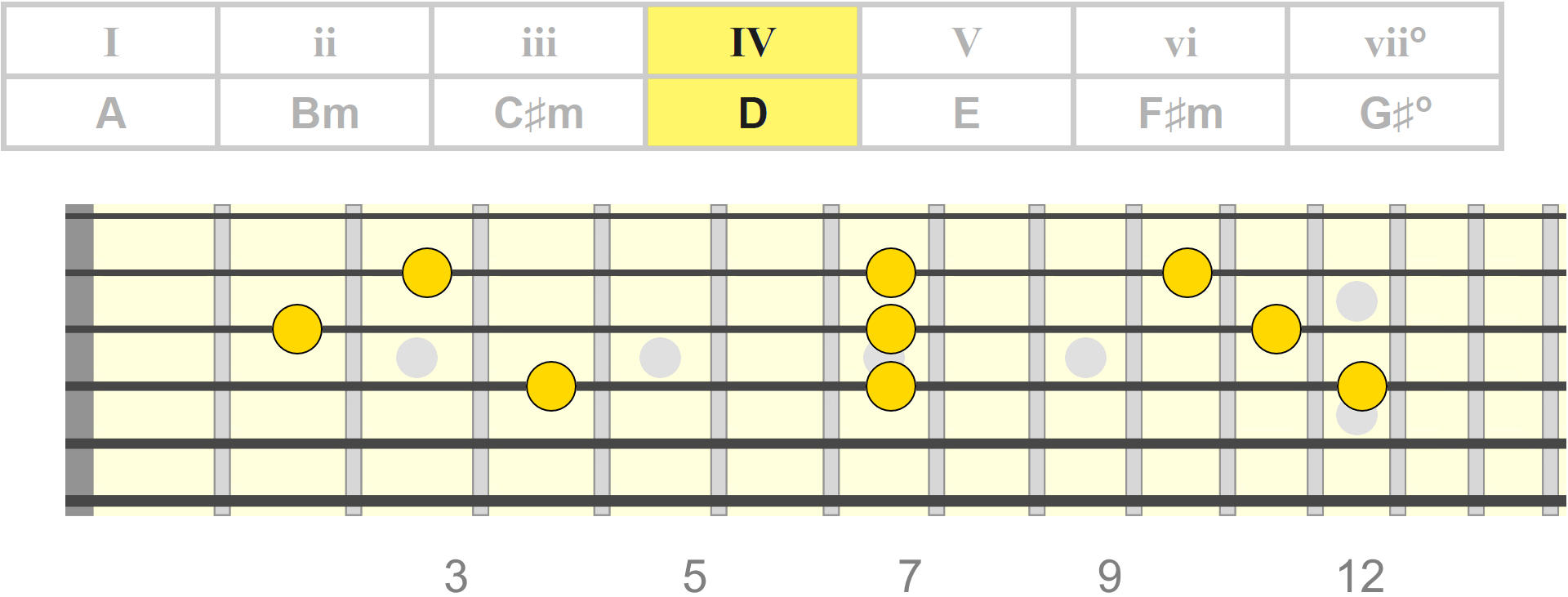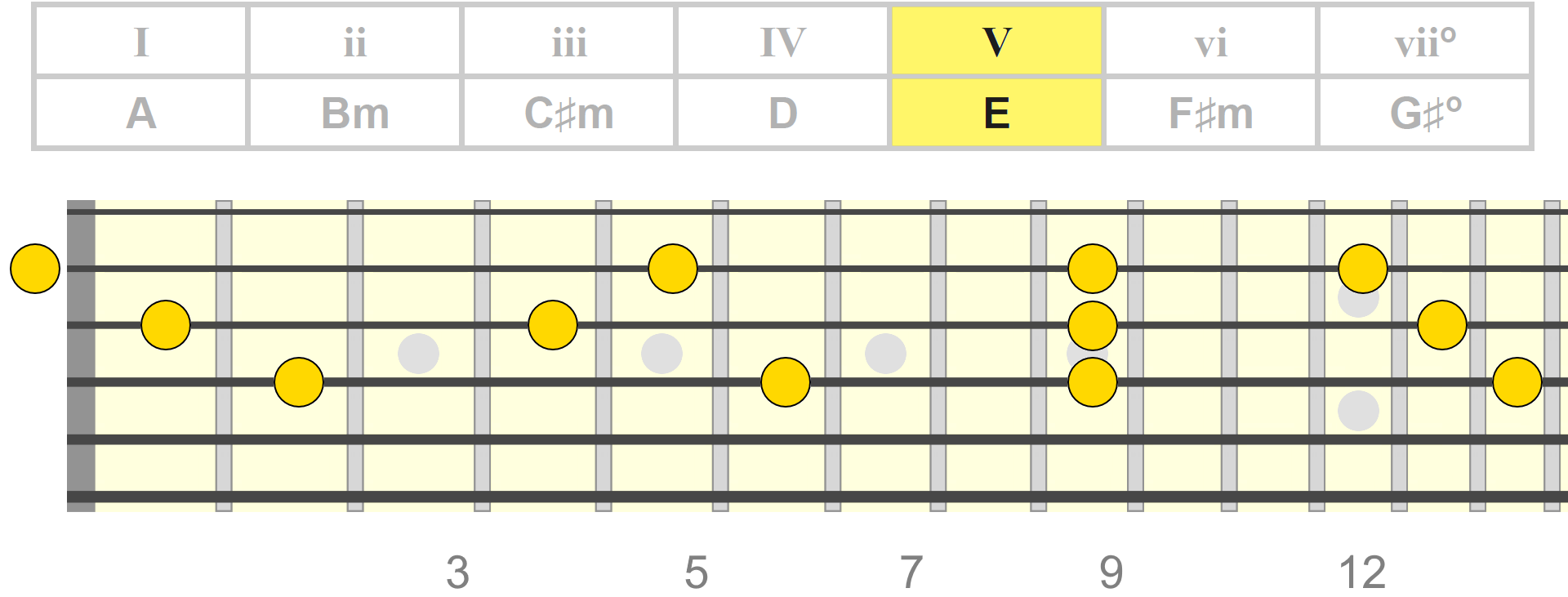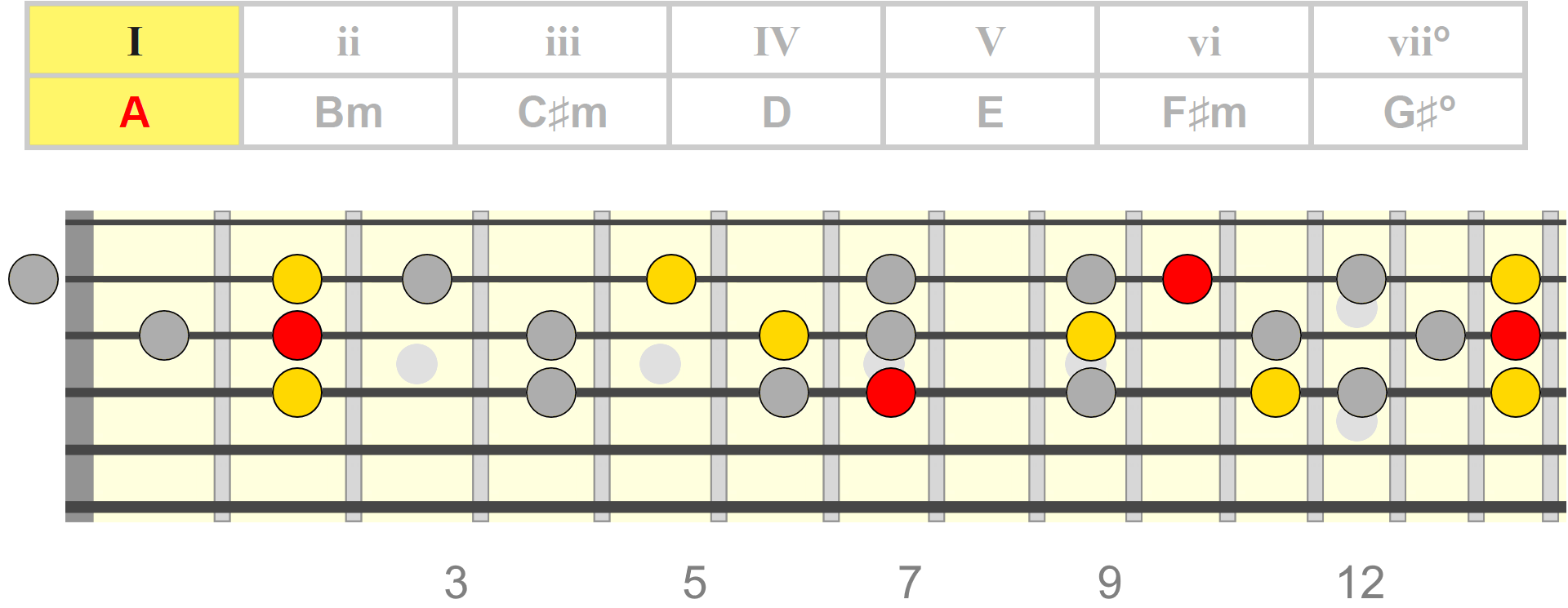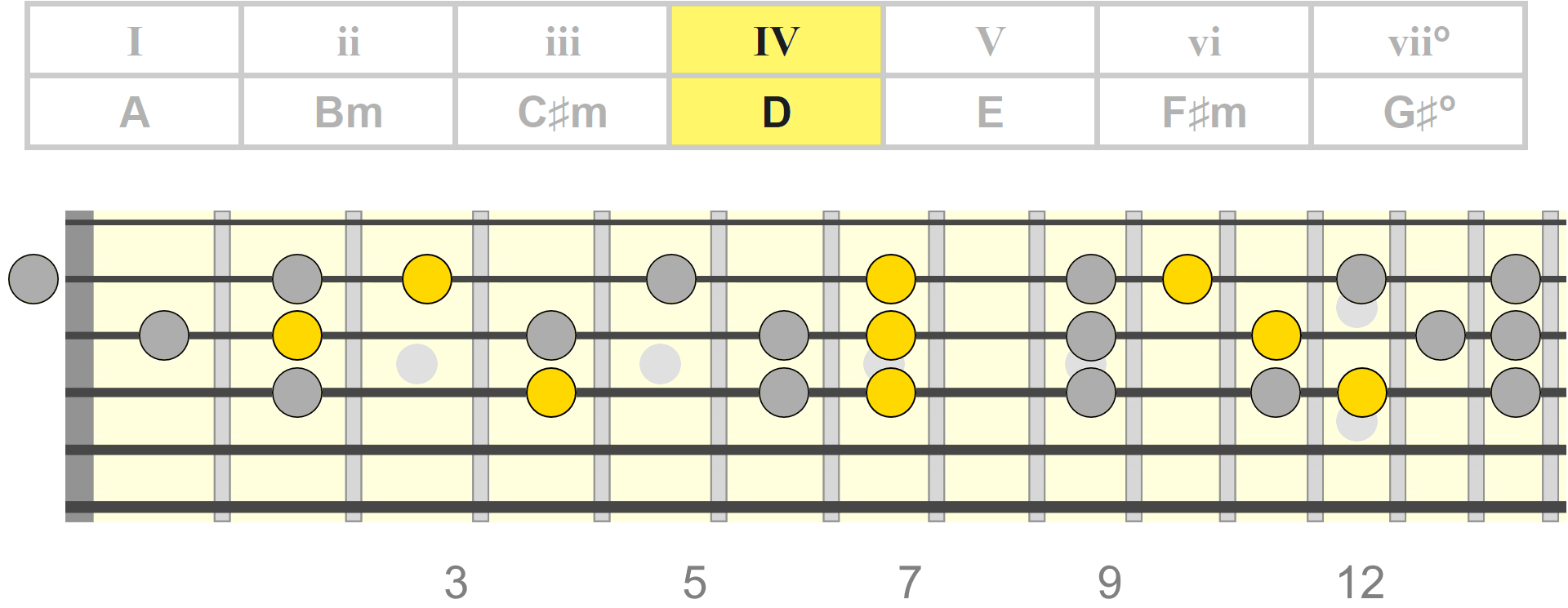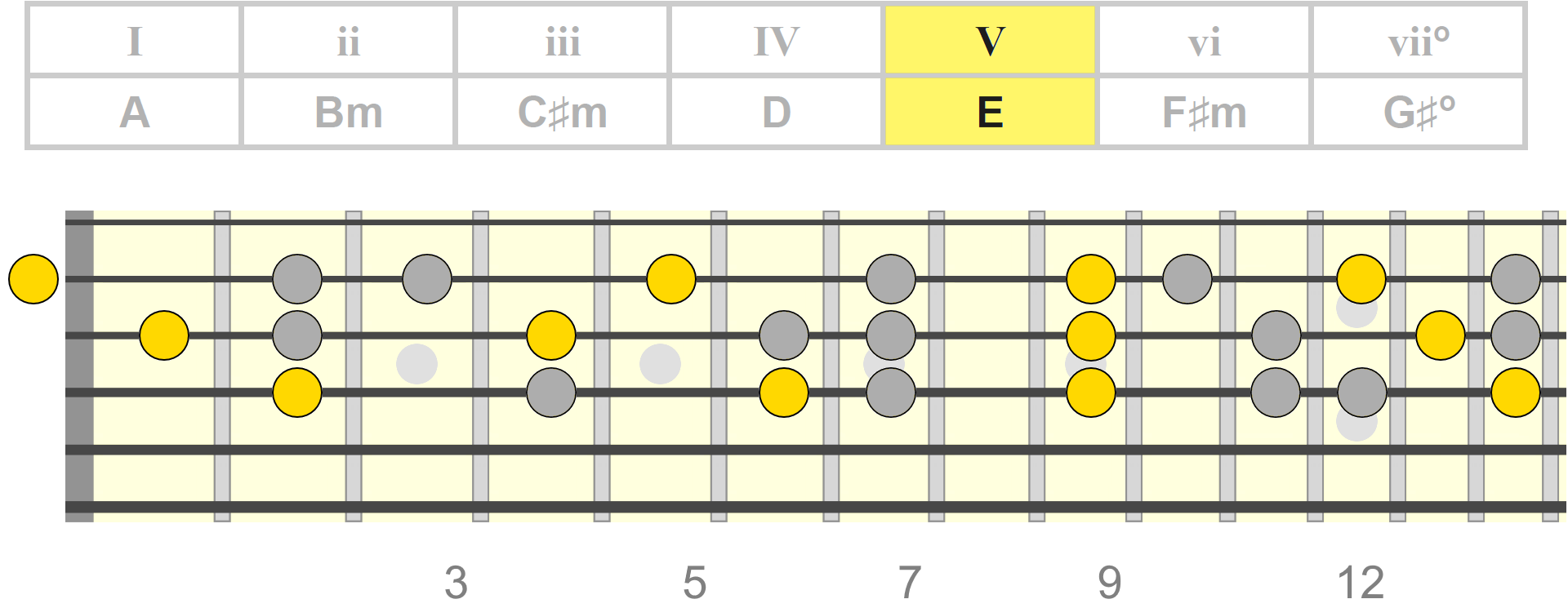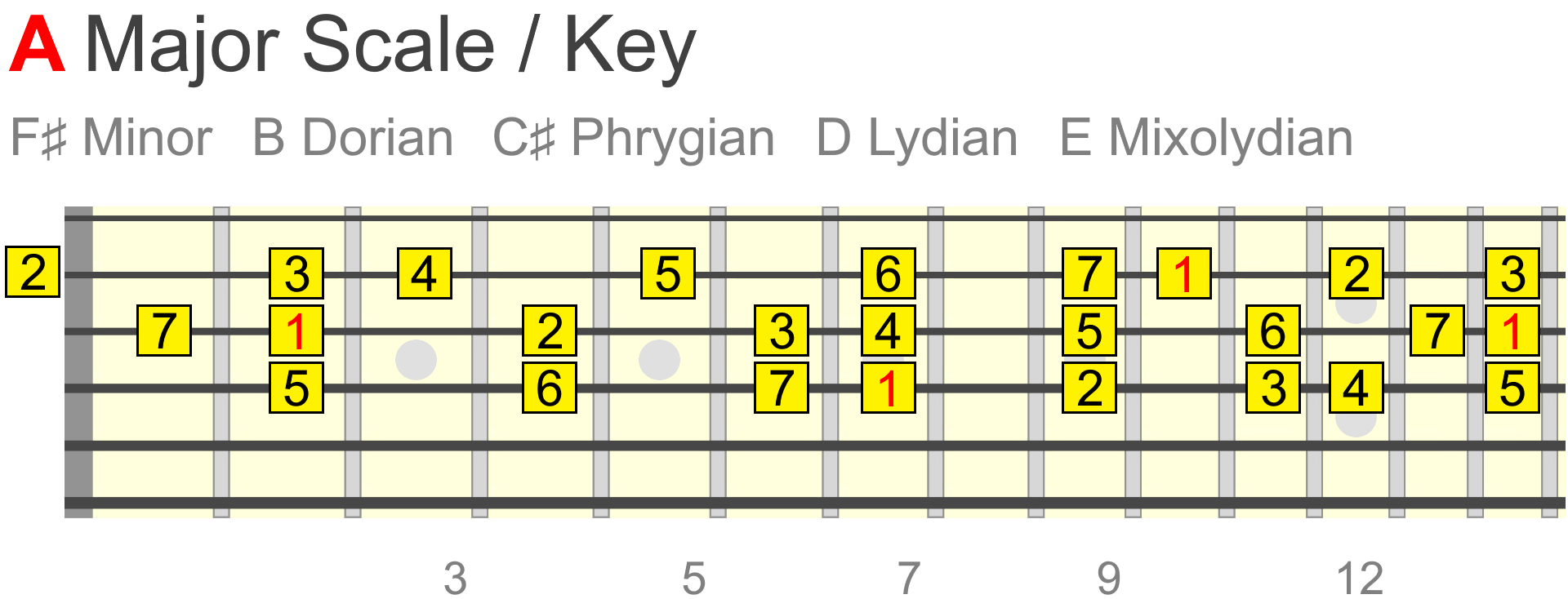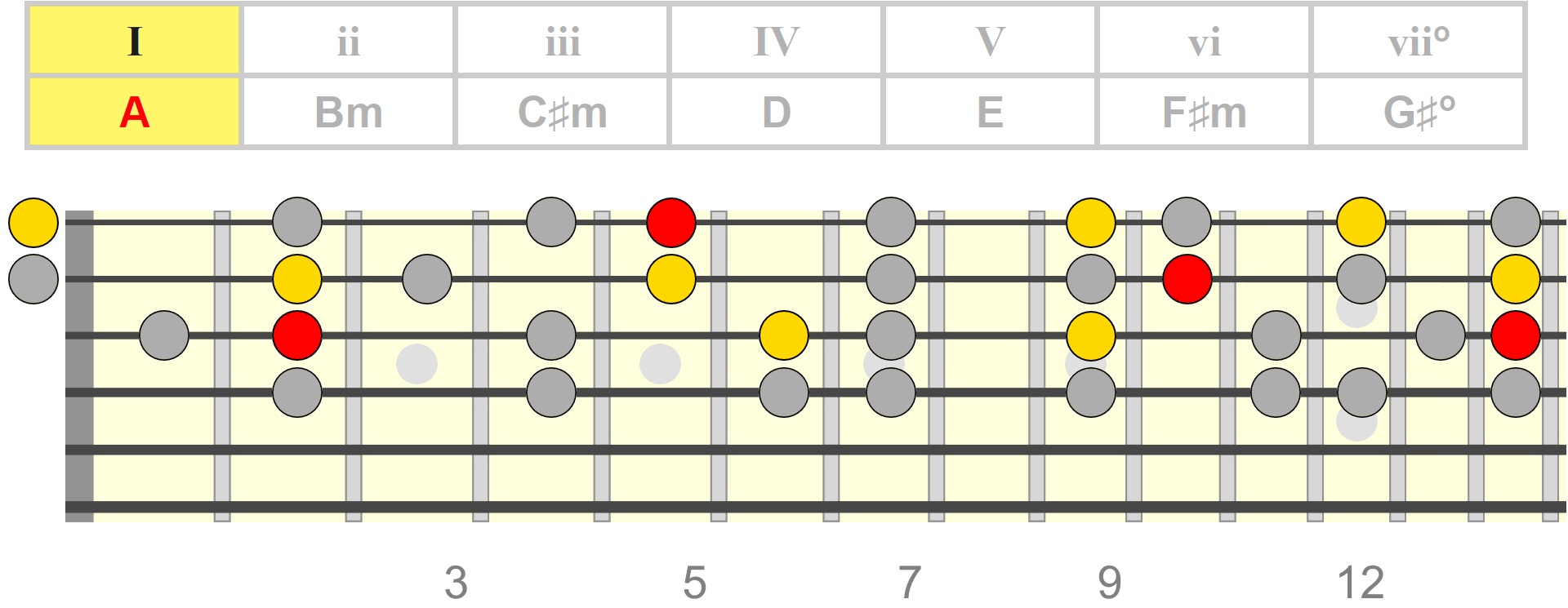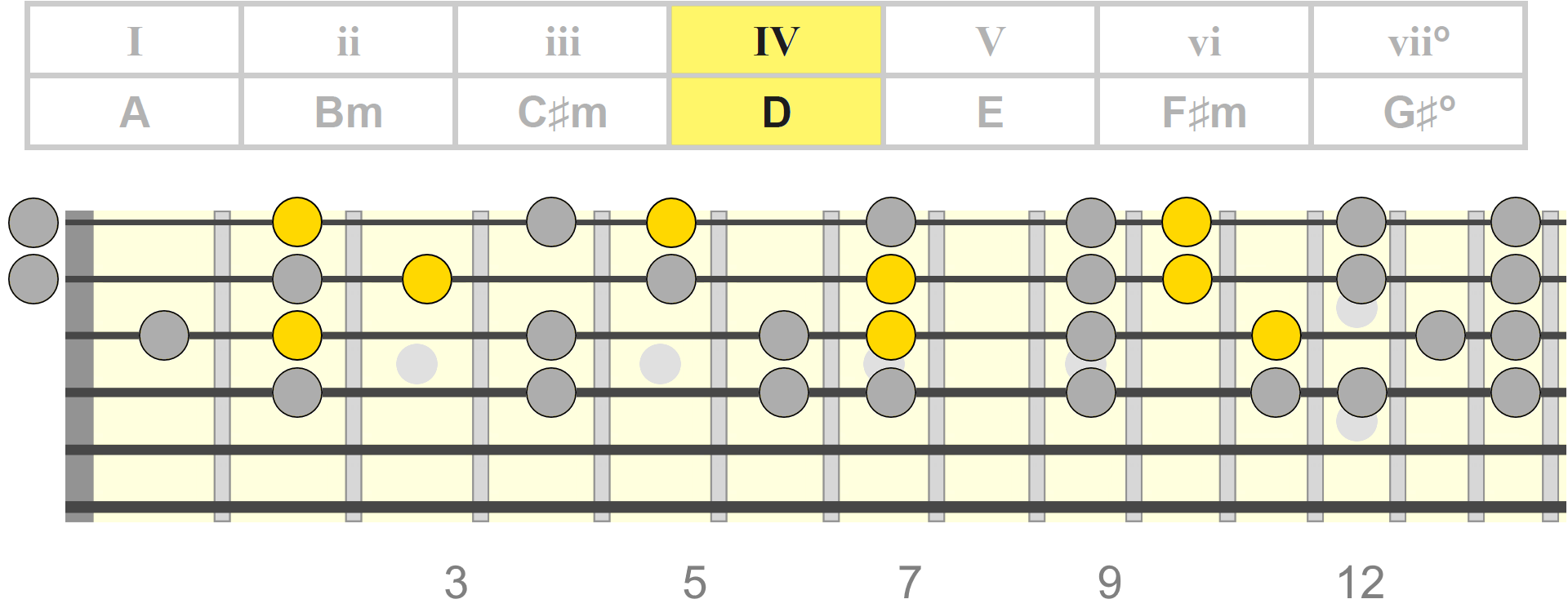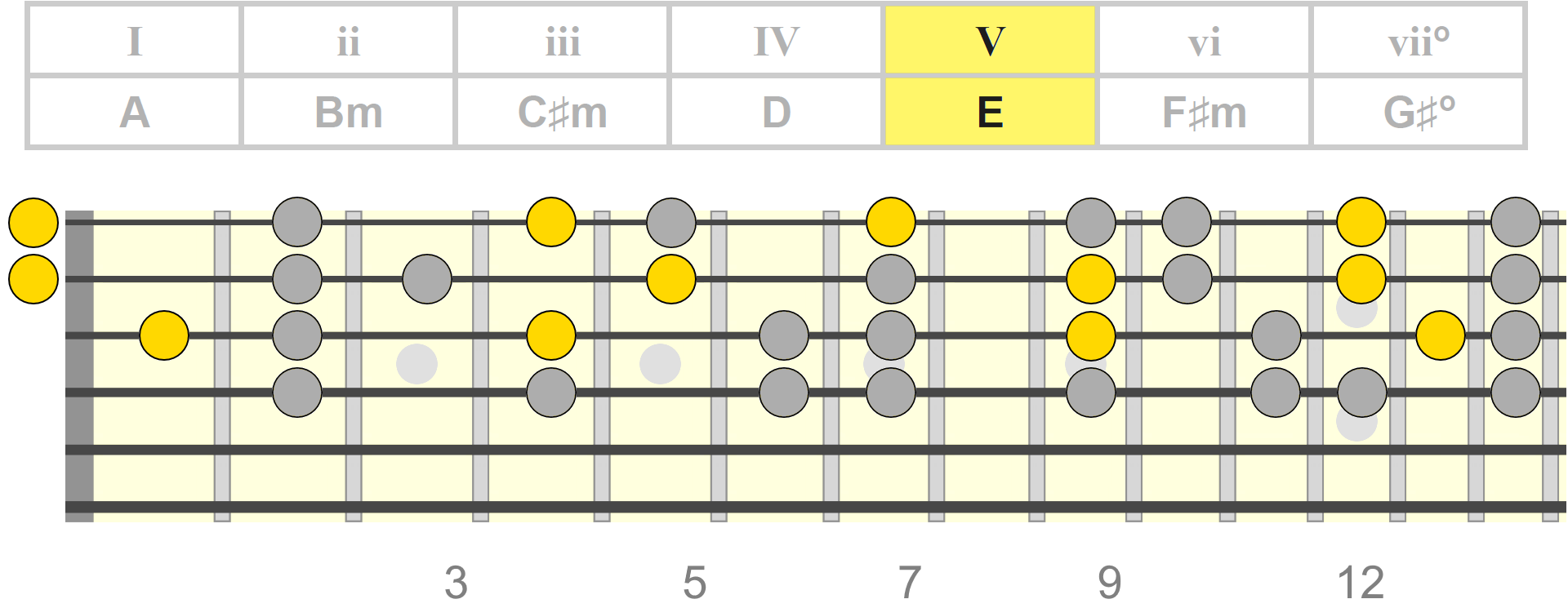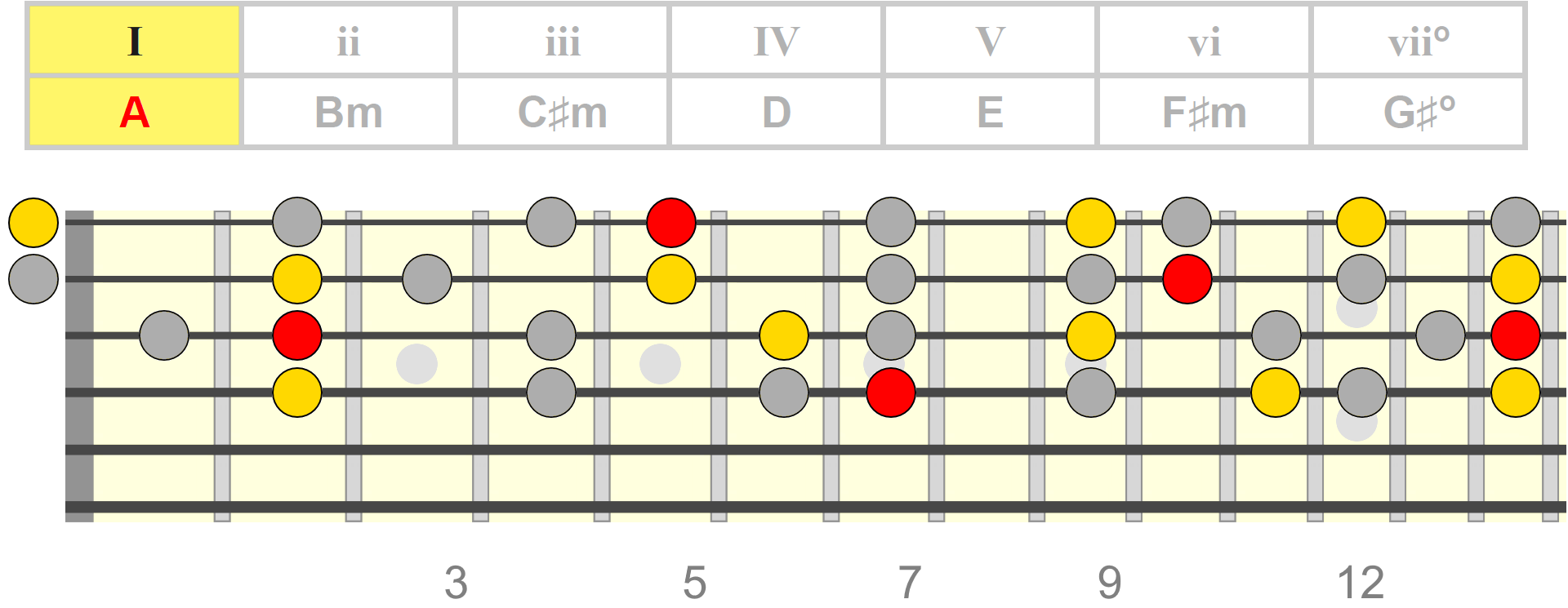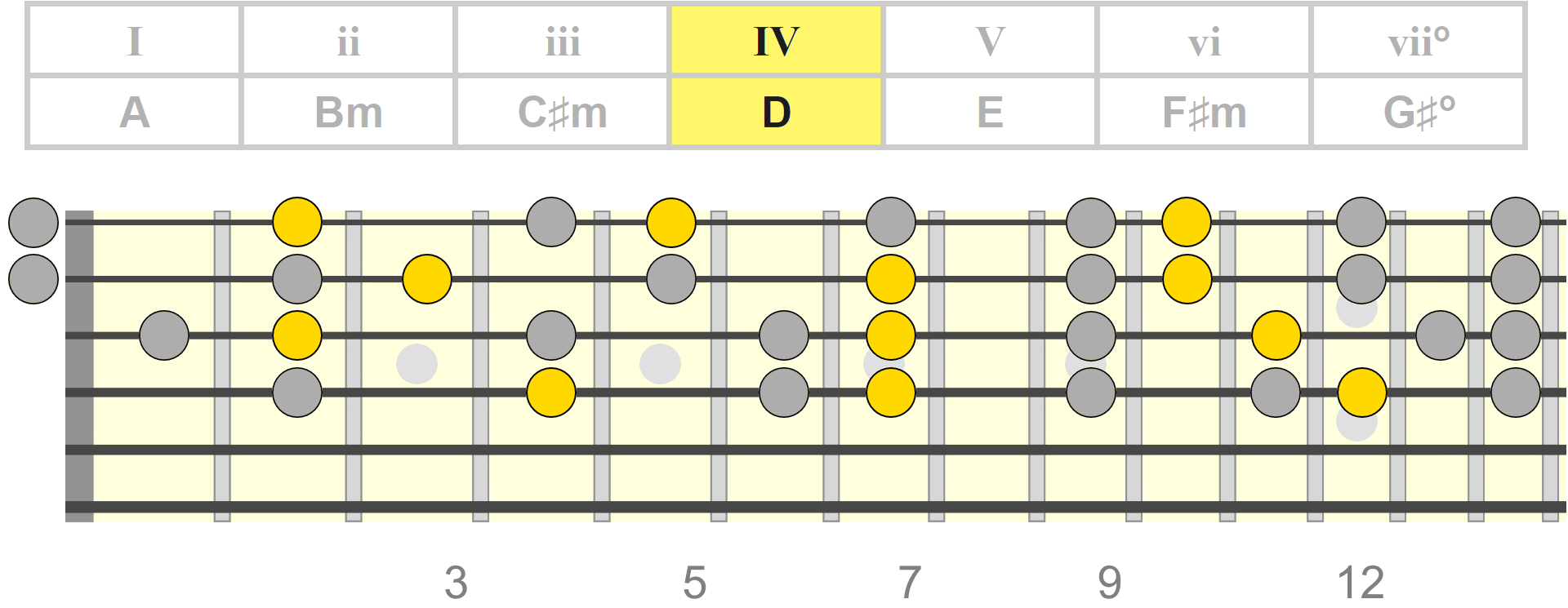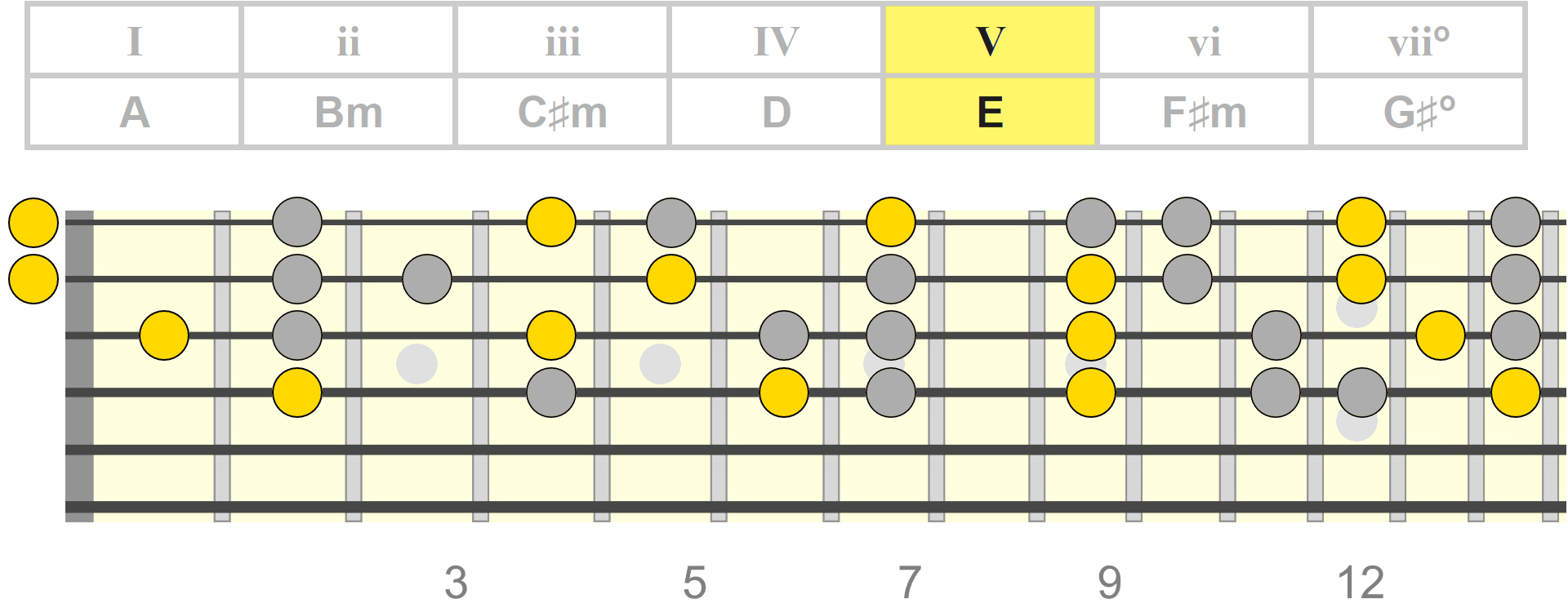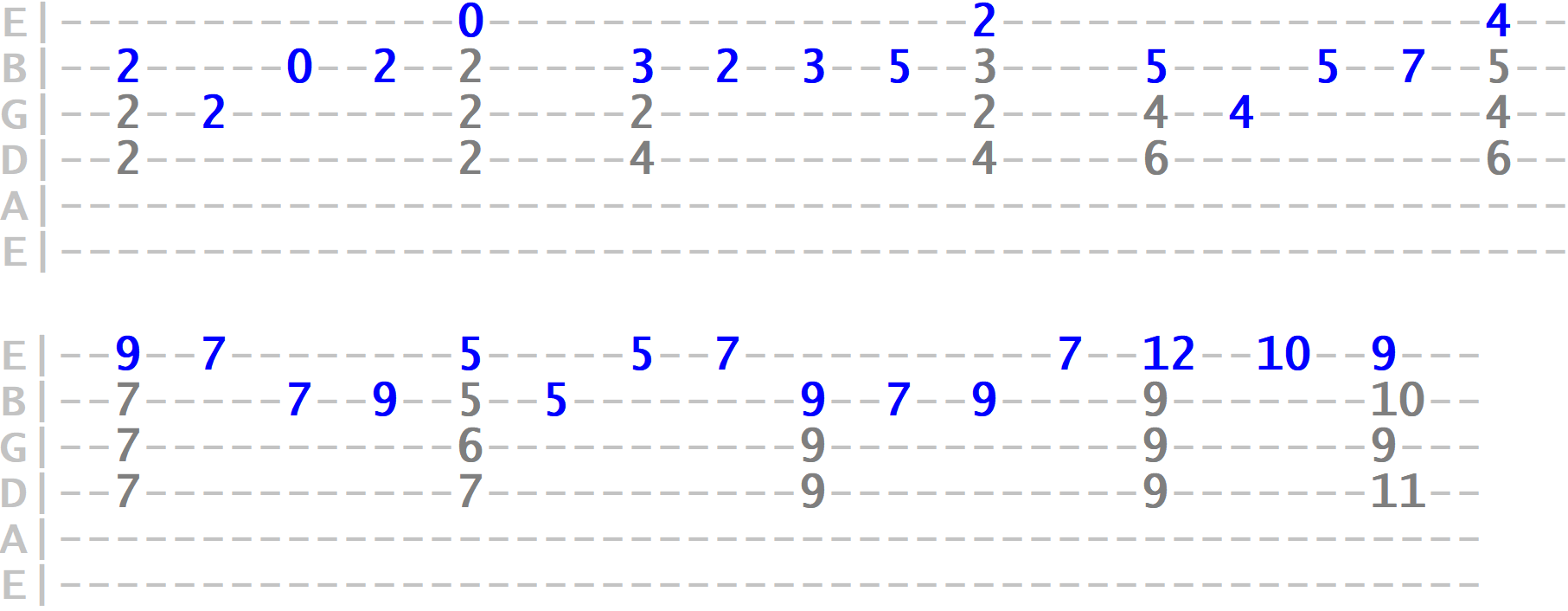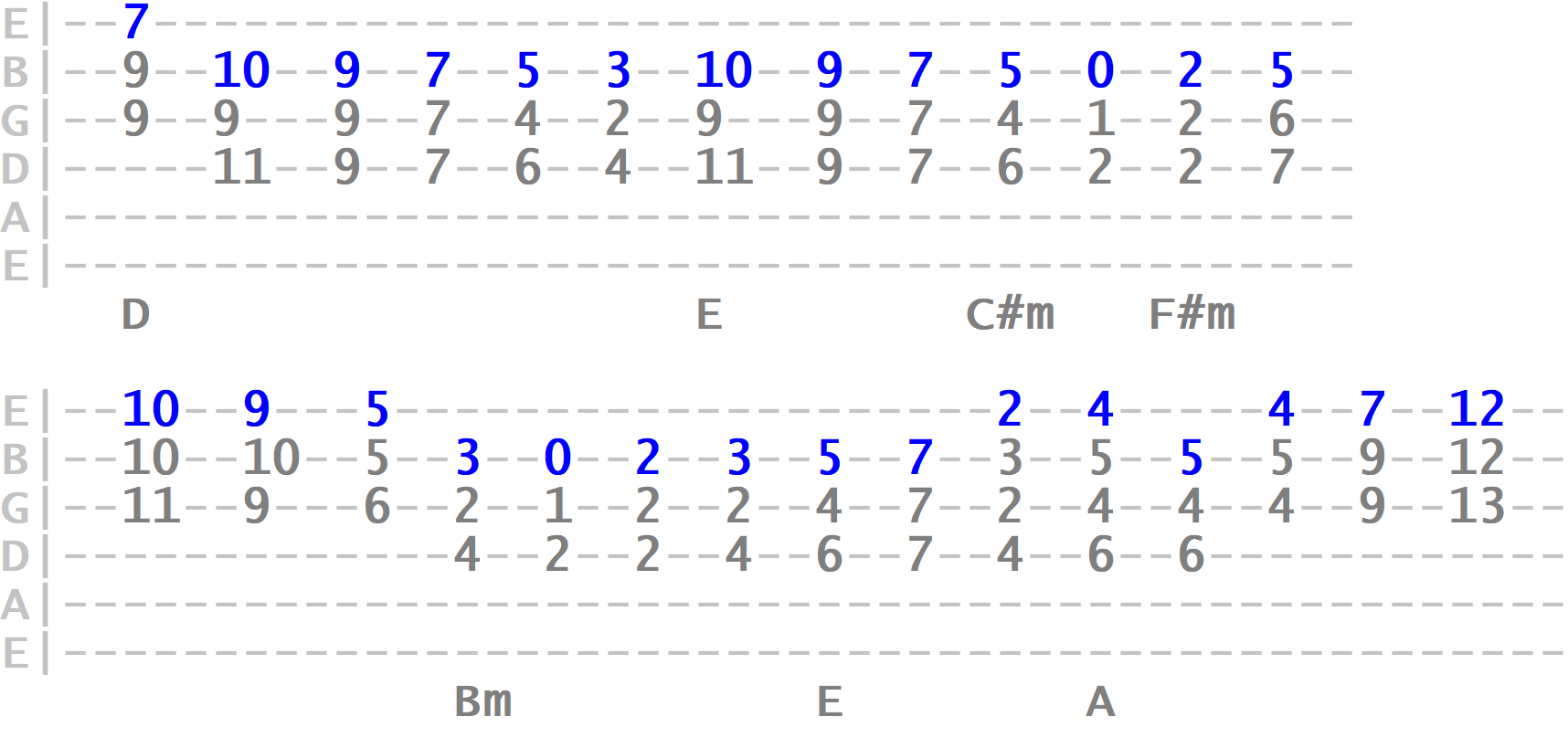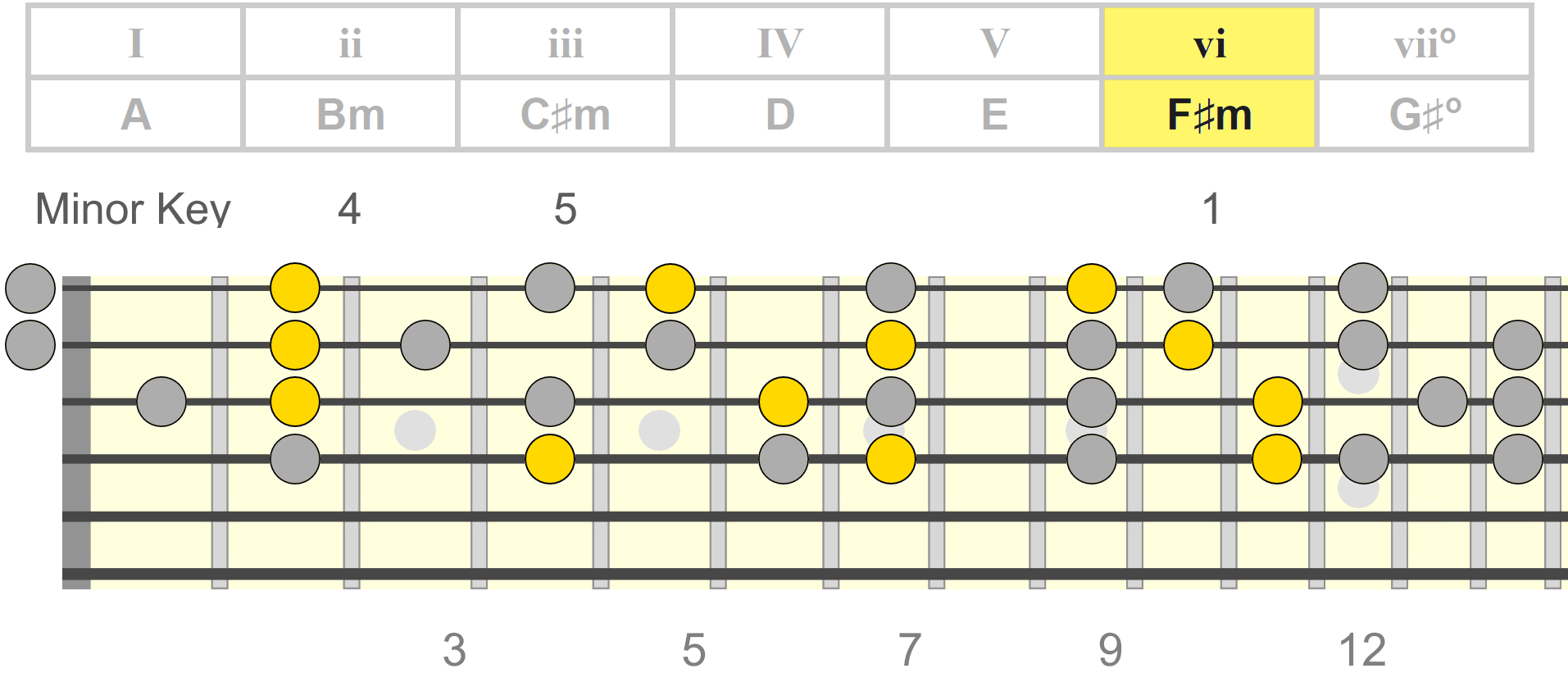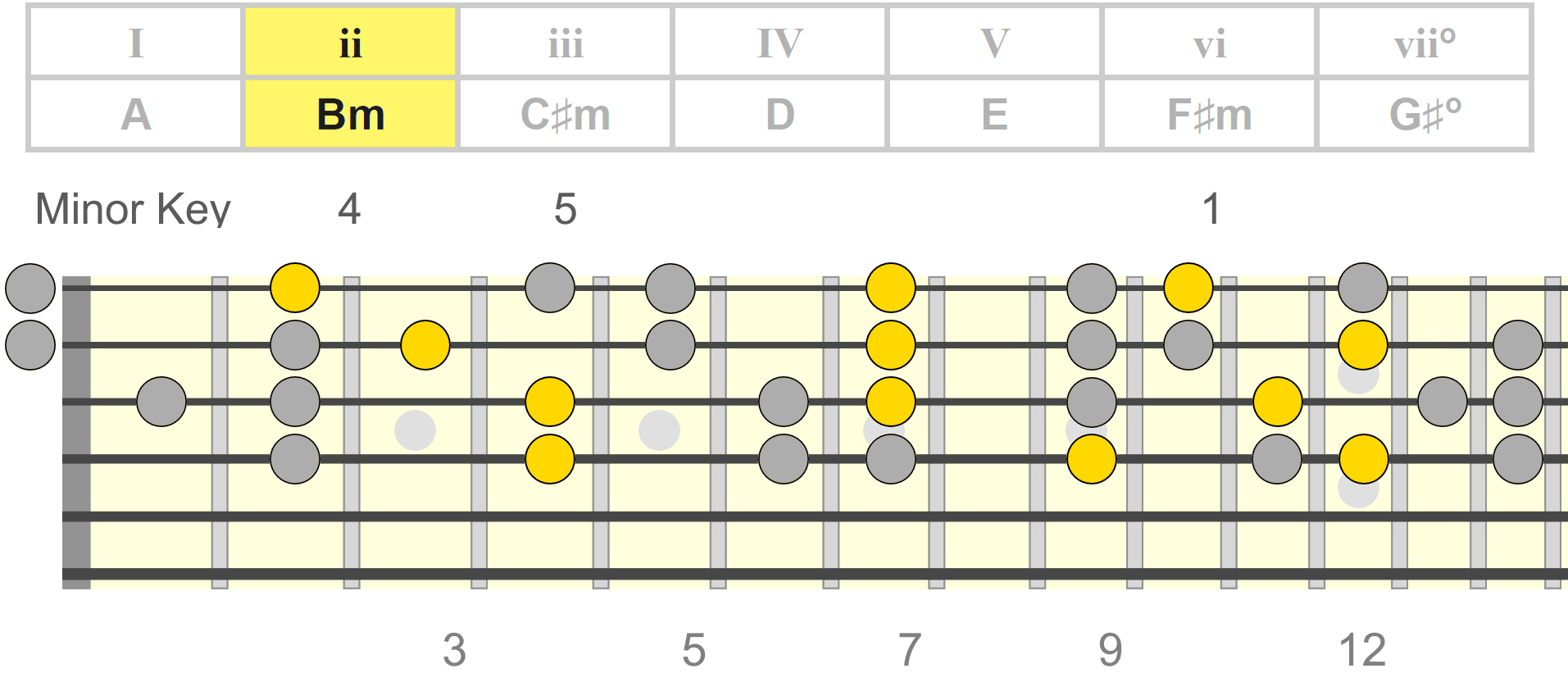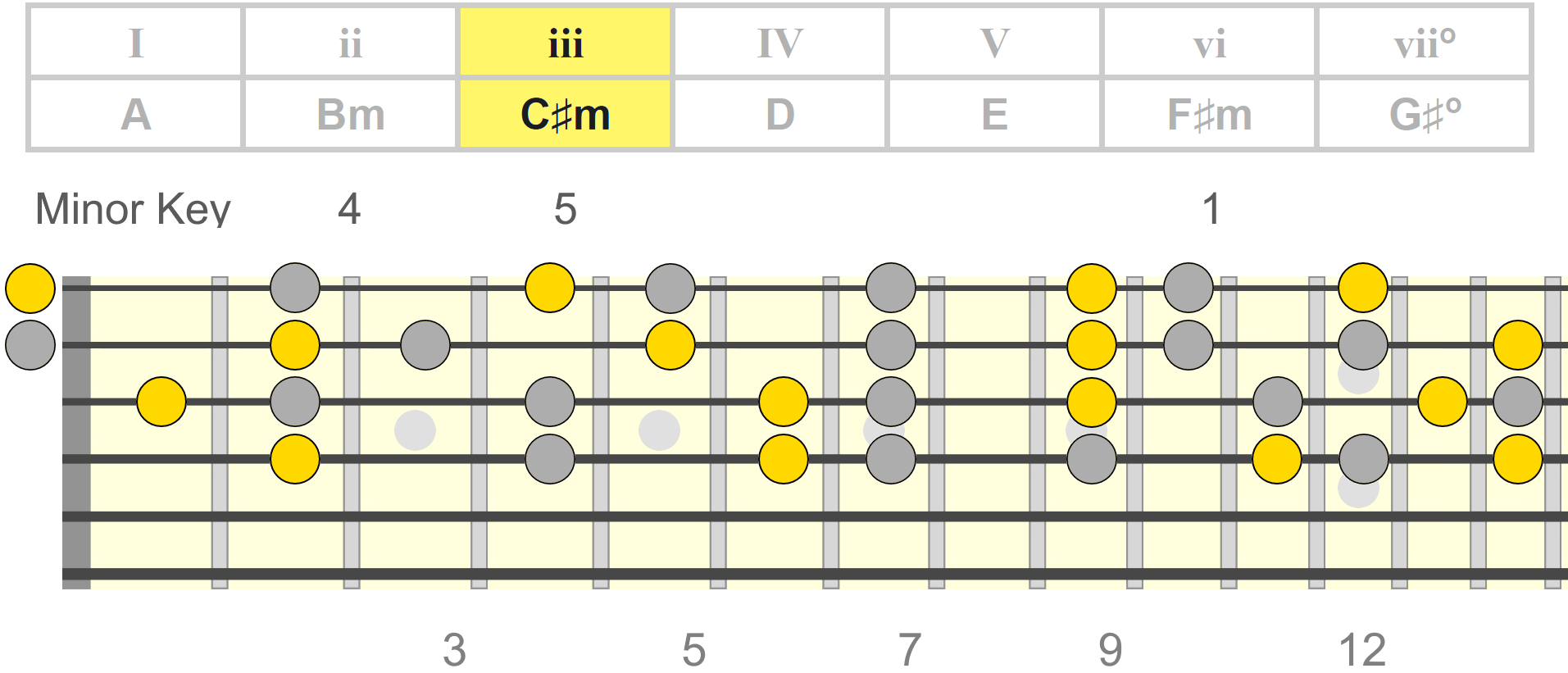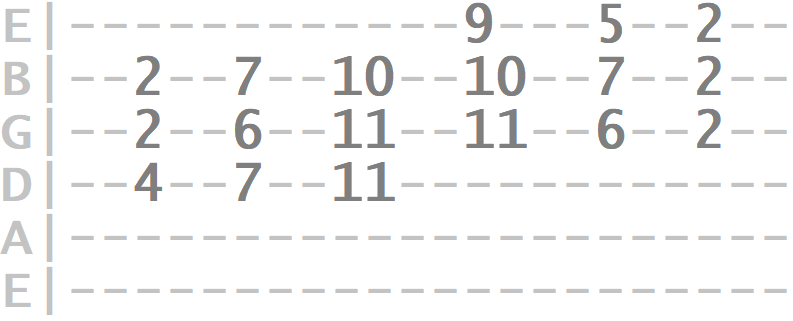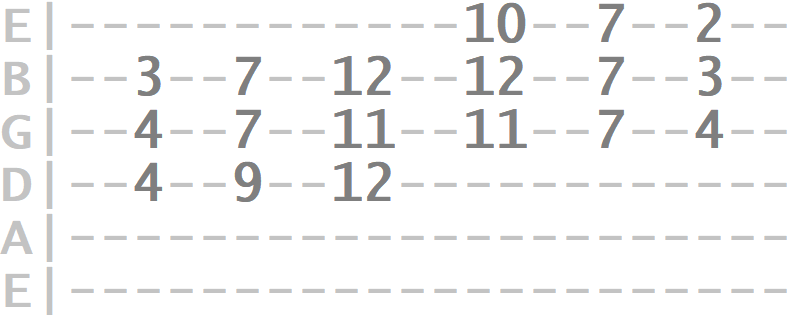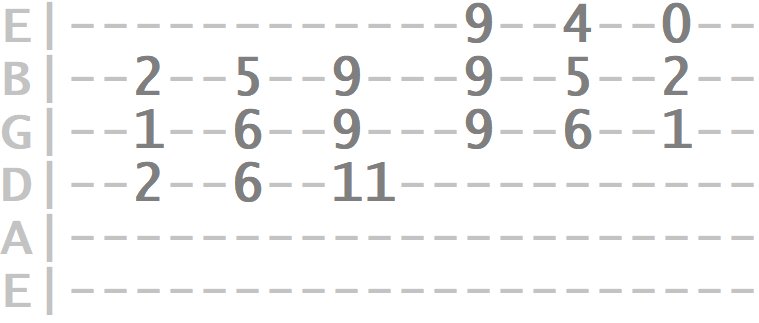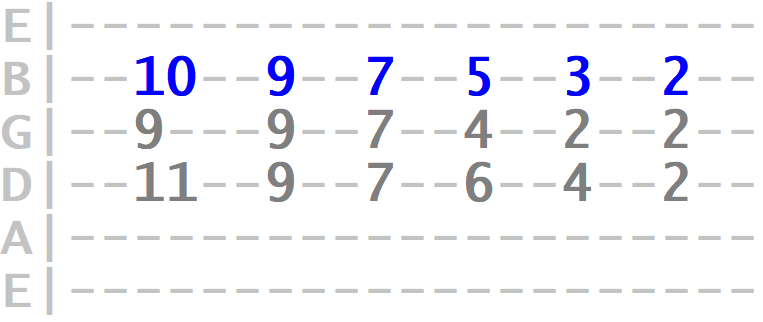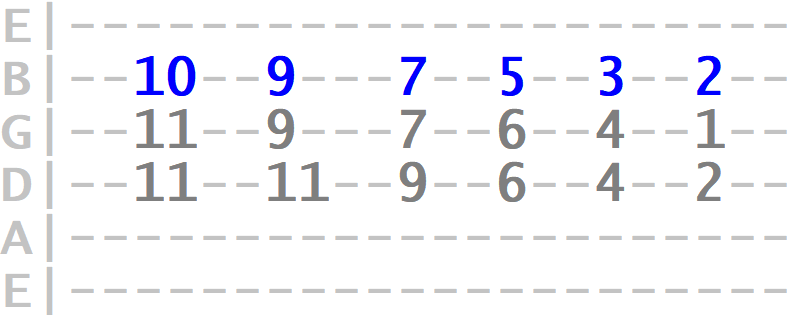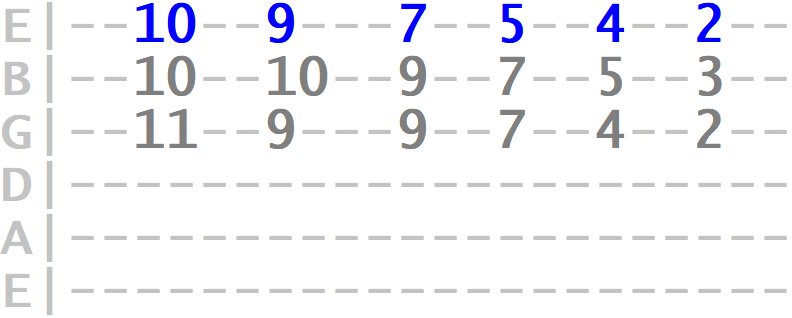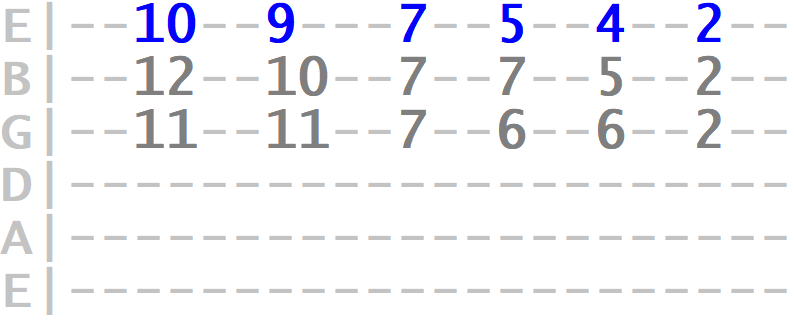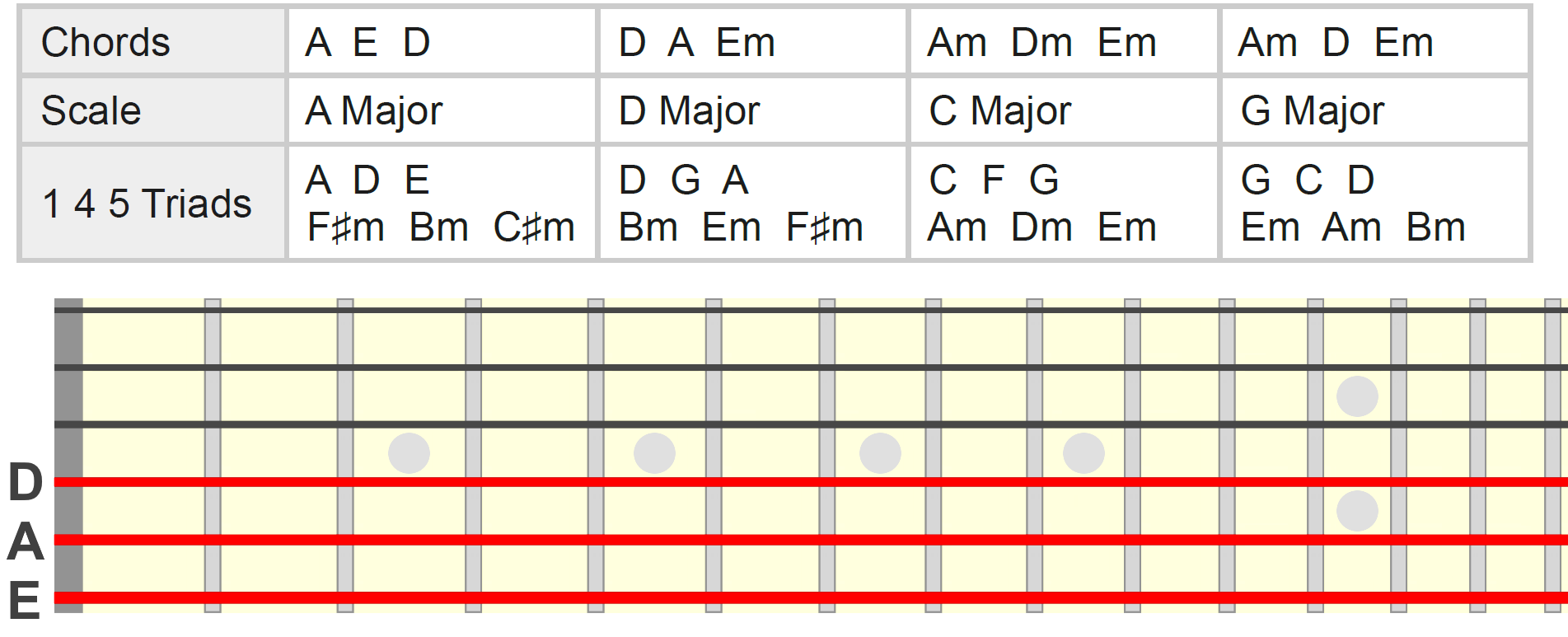Jump to...
Harmonic Foundations | Diatonic Application | Relative Minor 1 4 5
Building Our Harmonic Foundations
For this example, A major will be our key center (as the tonic or I chord). But as always, the sequence of shapes we use can be repositioned for different keys and chords. More on that later.
As we learned in the previous part, we can play this same major triad in three inversion positions up the neck...
We're now going to add two additional major triads from the A major scale. The first being the 4th degree (IV) chord of the scale, D major in this case. Just like with the tonic A major, we can play the 4th degree D major in three inversion positions, using the familiar triad shapes...
The other additional major triad is built on the 5th degree (V) of the scale, E major in this case. Once again with the three positions...
If we sequence the inversions of these 4 and 5 chords along the neck, resolving around the 1, we can create a simple harmonization of the scale and key...
Try different sequences to familiarise yourself with the triad positions. At the same time, be aware of the melody that forms on the 2nd string as you move through the shapes. An example...
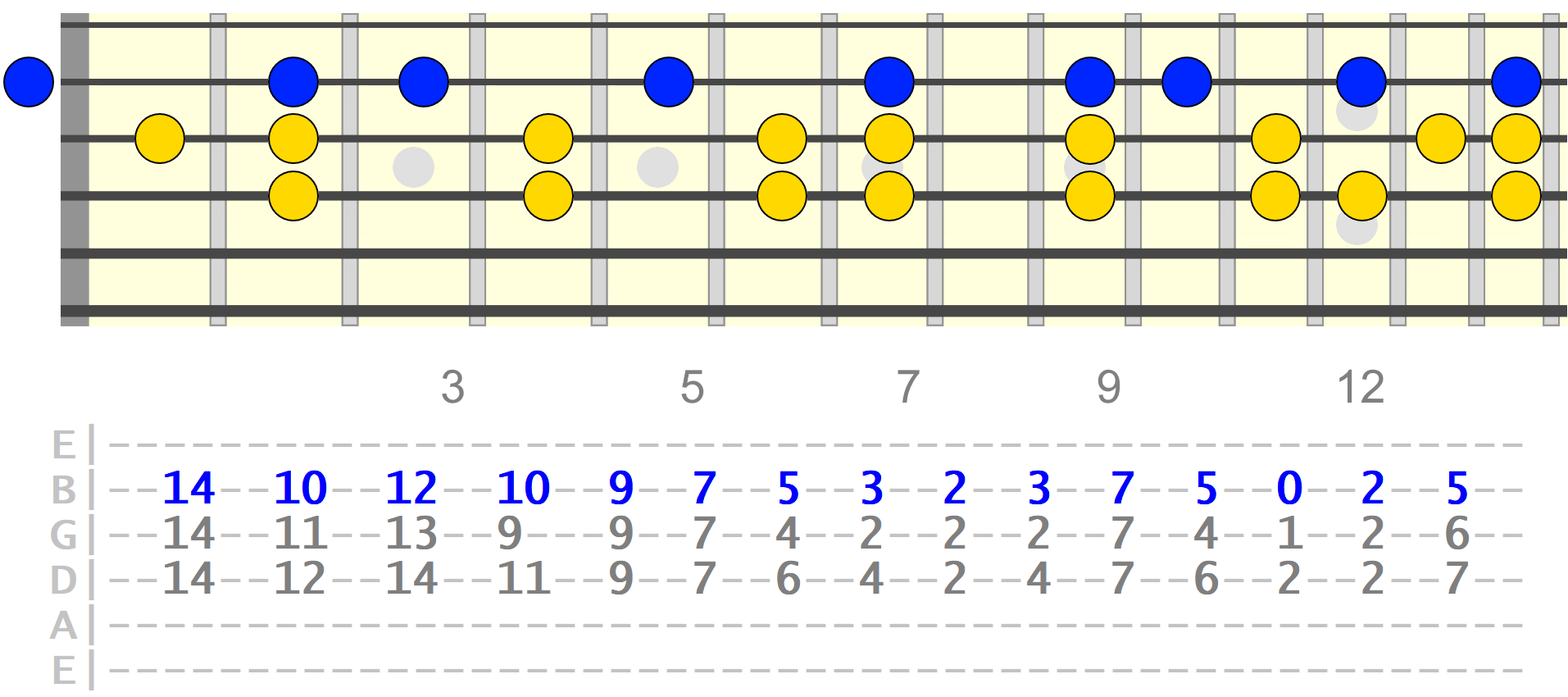
Tip: In that example, I used slides, hammer-ons and pull-offs to move between some positions, using a barred index finger where necessary. When playing in a chord melody context, think about involving techniques typically used for lead playing between chord positions.
So every tone of the major scale, and any melody that might come from it, can effectively be harmonised around the three inversions of the 1, 4 and 5 triads. This also includes its relative minor scale and modes, which we'll get to later.
See if you can pick out the shapes in the below scale diagram and think about their place within the scale...
Adding Melodic Movement
Using these triad positions as harmonic destinations, start by playing around with some simple melodic movement between them on the 2nd string, for example...
Obviously the aim is not to limit ourselves to creating melodies and harmonies from the major scale. But it does give us a practical and accessible starting point for developing our chord melody skills.
Additional Shapes
Go through the same process for the top three strings, first by harmonising the scale using 1 4 5...
Four-Part Harmonization
And as the shapes above can be seen as connected to the lower three-string shapes from earlier, we also have the option of a four-part harmonization of the scale, or making the 1st string available for the melody when needed...
So our harmonic foundations so far can be seen as a basic three or four-part harmonization of the scale.
1 4 5 Over Chords In The Diatonic Key
Before we start expanding our melodic roadmap, let's take some time to explore how the 1 4 5 harmonic foundations we've built correspond to different chords in the key.
These 1 4 5 triads we learned will work over all the chords in a natural or diatonic key. To demonstrate this, first, let's assign each chord in the scale (A major in this case) its most closely related triad, out of 1, 4 or 5...
Starting with our tonic chord, A major, we can connect this to the 1 triad, A major itself...
The ii chord (Bm in this key) can be connected to the 4 triad...
The iii chord (C♯m) can be connected to the 5 triad...
The IV chord (D major) can be connected to the 4 triad...
The V chord (E major) can be connected to the 5 triad...
The vi chord, and relative minor tonic, (F♯m) can be connected to the 1 triad...
The vii chord (G♯dim) can be connected to the 5 triad...
This alone demonstrates just how versatile these three simple 1 4 5 triads are in harmonizing the key.
Taking it further, we can move around these central triads using 1 4 5 as a means of creating a more melodic expression of the chord in question.
For example, here I'm playing over the ii chord, Bm...
This sequence could also get reharmonized comfortably over the IV chord, D major. So same sequence as above, but different backing chord...
To really hear how 1 4 5 aids the melodic voice of our harmony, we can try them over a diatonic chord progression. For example...
Tip: In that example, when resolved on the tonic chord, I played through the 5 triad, which gives the tonic an especially restful major 9th flavour.
So we can use 1 4 5 as the basis of our block chord melody for accompaniment. Spend time learning the 1 4 5 positions in other keys and you'll have a strong harmonic foundation for creating flowing, multi-part melodic movements over common chord progressions.
These triads will also accompany the natural minor key effectively. All we have to do is learn the concept of relative major and minor tonic to find our 1 4 5 triad positions. For example, the A major key triads will work in its relative F♯ minor key, since both keys share the same seven chords.
Relative Minor Triads
For both major and minor keys, we can also add in another 1 4 5 relationship, using minor triads, giving us more voicing options within our key.
This time, we're focusing on the minor chords within the diatonic key as our relative minor key 1 4 5...
Just like the three major triads, the three minor triads, each with their three inversions, will cover every tone in our scale and diatonic key...
Starting with the vi chord, F♯m in this case...
The ii chord, or Bm...
And finally the iii chord, or C#m...
Just like before, these minor triads can be scaled out and used to harmonise a melody over all the chords in the diatonic key. Here we start in the major key and resolve to the relative minor...
You'll notice that the difference in how these minor triads interact with chords, vs the major triads in the same position, can be subtle. For example, here's a sequence using the major 1 4 5 triads over A major...
And here's a similar sequence, with the same melodic line, using the relative minor triads...
Another example over D major, starting with major triads...
Now with the relative minor triads...
This kind of basic reharmonization, switching between major and minor 1 4 5 triads over a given chord, is a great initial ear training exercise for picking out these subtle harmonic colours.
Of course, we'll naturally end up combining them in sequences, choosing the appropriate shape for serving the melody.
Still To Come...
With our harmonic foundations in place, we can now start to expand our melodic landscape around them.
Each harmony part can be connected to a related scale pattern. By breaking up the scale into segments or boxes surrounding the triad positions, any melodic note will be within reach and in close proximity to our chord shape...
In a coming part, we'll start to use these patterns to further colour and connect movements of harmony and melody. In the meantime, keep exploring and building on the harmonic foundations we've established.
Remember, if you're finger picking solo, you can always use the lowest 3 strings as the open bass for your chord changes, typically played with the thumb. In standard tuning alone, the 4th, 5th and 6th strings can be used as the bass for a number of progressions, here detailed with their respective scale...
You can try different sequences of the three chords. For example, A D E, D A E, E D A etc. This will allow you to explore the three and four-part shapes we've looked at, solo.
If this lesson has helped you, please consider joining my Patreon, where you can get access to a growing library of exclusive content, vote on new lessons you want to see and get priority answers to your questions.
Thank you so much for your time and support!
